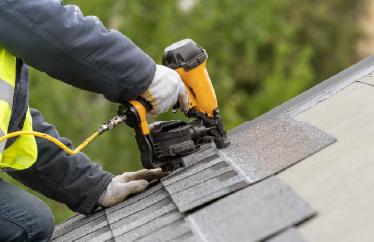Go Green to Spend Less Green: 12 Electricity Apps to Track Your Usage

If you’ve ever felt like your dad has an extreme obsession with the thermostat settings, you’re not alone. The “Dad vs. Thermostat” meme chronicles people trying to adjust their home’s temperature — and the watchful eyes of dads who will go to any length to keep their thermostat untouched by anyone else.
In defense of dads, HVAC is the highest energy user in the home — in fact, more than half of a home’s yearly energy usage goes to heating and cooling. But luckily, the battle over the thermostat doesn’t have to boil over.
There are eco-friendly adjustments that can be made in the home to both lower energy bills and help reduce your carbon footprint. It’s a win-win: Lower bills make dad happy, while reduced energy usage can help fight climate change. Plus, smart home technology has made it easier than ever to track your energy consumption and make adjustments where needed.
Read on for ways to reduce energy consumption in your home and track your usage as you go.
Electricity Apps and Websites to Track Your Usage
Like most things, there’s an app for energy tracking. These applications can help track, analyze and reduce your energy consumption.
1. Smappee
- Available on: iOS and Android
- Cost: Free app with the purchase of the Smappee home energy sensor
Smappee aims to provide comprehensive, real-time insight into energy consumption that can even pinpoint which appliances are using the most power. Via a sensor attached to the user’s fusebox, Smappee collects energy insights and sends them to the user’s phone.
2. Energy Cost Calculator
- Available on: iOS
- Cost: Free
Energy Cost Calculator uses user-gained data about appliance usage to calculate the energy cost. The user inputs their estimated time using each appliance, and the app will calculate the estimated cost per day, month and year.
3. Meter Readings
- Available on: iOS
- Cost: Free with in-app purchases available
Meter Readings allows users to input data from up to nine different meters and visualizes the data in graphs to help them understand their consumption and energy cost. Users can use this graph data to track their energy usage over time.
4. Energy Consumption Analyzer
- Available on: Android
- Cost: Free
Energy Consumption Analyzer lets users input meter data and provides graphs of usage and estimates of future consumption and cost. Users can also add comments to account for times that energy usage was higher or lower because of a specific circumstance.
5. Energy Tracker
- Available on: iOS
- Cost: Free with in-app purchases available
Energy Tracker allows users to input consumption data for electricity, water, gas and heat, then creates graphs to detail consumption. You can break down energy consumption by the hour, day, week and year.
6. Consumptions
- Available on: iOS
- Cost: Free
Consumptions allows you to input any number of meters into the app for tracking and evaluation. You can compare usage to previous weeks or months to determine when you are using more electricity than normal.
7. Sense Home Energy Monitor
- Available on: iOS + Android
- Cost: Free app with the purchase of Sense sensor
The Sense app connects to a Sense home energy sensor that the user attaches to their electrical panel. The sensor detects and analyzes power consumption and reports usage data to the app. The Sense app can also connect to the home’s WiFi network to report on usage and productivity.
8. EyeOnWater
- Available on: iOS + Android
- Cost: Free
EyeOnWater focuses specifically on water analysis and reporting. The app connects to the user’s water utility accounts to analyze usage, discover trends about water usage and cost and even report potential leaks on the property.
9. EcoBee Smart Thermostat
- Available on: iOS + Android
- Cost: Free app with the purchase of the smart thermostat
The EcoBee Smart Thermostat and corresponding phone app allow users to adjust their home’s temperature on-the-go. This can save energy and money by avoiding unnecessary heating and cooling while the homeowner is asleep or out of the house.
10. EnergySaver
- Available on: iOS + Android
- Cost: $9.99
EnergySaver allows users to create profiles for their home and input which devices they use regularly and the utility rates they pay. From there, the app will analyze usage patterns and energy consumption and develop a plan for the user to reduce usage and bills.
11. Light Bulb Finder
- Available on: mobile web surfing
- Cost: Free
With proven benefits to opting for LED bulbs, Light Bulb Finder helps users find these light bulbs in their area and tells them where they can get the best deals. The site lets users input their address and which type of light bulb they need, then gives them options on where to purchase them.
12. OhmConnect
- Available on: mobile web surfing
- Cost: Free, but only available in California, Texas and Toronto, Canada
OhmConnect aims to reward users for turning off their appliances during peak hours. During an “OhmHour,” the site sends out a notice to users that energy demand is high. If the user opts to turn off their electricity, they will be rewarded cash payments or an entry into a weekly prize drawing.
How To Reduce Seasonal Electricity Costs
The weather outside can impact how we use the energy inside. When you’re spring cleaning or decking the halls, consider making these weather-friendly adjustments to help you save all year long.
Hot Months
-
Buy standing or box fans: Invest in a standing or box fan to keep the area cool. This way, you don’t have to pump air conditioning into a room that you don’t frequent.
-
Go with the (low) flow: Turn on your sprinkler systems in the morning so the water doesn’t evaporate quickly in the summer sun. Also, look into low-flow sprinkler systems that will use less water.
-
Close your blinds and curtains: Closing blinds and curtains can keep the heat from the sun coming in through the windows and making your house hotter.
-
Use the bathroom fans: When spring humidity makes your home sticky, turning on the bathroom fans can suck up and recycle the humid air to make your home more comfortable without blasting the AC.
Cold Months
-
Find and seal cracks: Cracks in your walls or windows can let hot air escape and force your heating system to work twice as hard. Sealing these cracks can keep your house warm and strong.
-
Take advantage of the sun: When the sun is beaming through the window, open the curtains or blinds and take advantage of the heat to save on heating costs.
-
Keep your fireplace damper closed: When you aren’t roasting chestnuts on an open fire, close your fireplace damper. Leaving it open lets hot air out of the home and overworks your heater.
-
Give it some space (heaters): Keep your common areas warm with space heaters to avoid using energy to heat areas of your home that you rarely visit.
Eco-Friendly Home Management Tips
Big renovations like solar panels are sure to make your home more eco-friendly, but even small changes can be made to your home and lifestyle to make them more eco-friendly while remaining comfortable.
1. Invest in a programmable thermostat
A programmable thermostat allows you to control the temperature of your home on-the-go. That way, you can turn off the air conditioning when no one is home to enjoy it or at night when you’re sleeping under blankets. Smart home devices can help save money on electric bills by cutting down on energy costs.
2. Use LED light bulbs
Light-emitting diode (LED) light bulbs are a more energy-efficient alternative to regular light bulbs. These light bulbs consume low amounts of power and have a longer lifespan, meaning they aren’t only saving the planet, but they’re also saving you money — LED light bulbs save about $1,000 over a 10-year period. Doesn’t that make a light bulb turn on in your head?
3. Line-dry your clothes
Drying your clothes costs you about $100 per year, on top of the energy used to do so. Stringing up a clothesline in warm months can save you both money and energy. Plus, line drying your clothes can help reduce wear and tear caused by an electric dryer, which will make your clothes last longer.
4. Use power strips
Vampire appliances like microwaves, gaming consoles, phone chargers, and others use energy when they are plugged in — even if they aren’t in use. A power strip can help you solve this problem. Suppose you plug your television and gaming consoles into a power strip. In that case, you can flip the power switch off completely when you aren’t using the TV to keep the vampire appliances from leeching and adding roughly $200 to your yearly energy bill.
5. Maintain or upgrade appliances
Old or low-functioning appliances have to work harder to do their duty. As equipment breaks down, the amount of energy they consume only increases. You can combat this cost by replacing old appliances — you might even want to look into an energy-efficient model to save you even more money and energy.
6. Turn down your water heater
No adult needs water hotter than 120 degrees Fahrenheit — yet, most water heaters are programmed to heat water higher than that. Your water heater will continue to heat the water to its maximum setting. Adjusting the maximum temperature to 120 degrees will keep your water heater from heating water to an unnecessarily hot temperature.

Reducing energy usage in the winter or in the summer doesn't mean you need to sacrifice your comfort. By making a few lifestyle changes and keeping track of your energy usage via an app, you can make a difference for both the planet and your wallet.
Just like an app has your back for energy consumption tracking, your home insurance company can have your back for any other home needs. Hippo Home Care can help you with household situations that may arise — just another way to keep dad happy.



